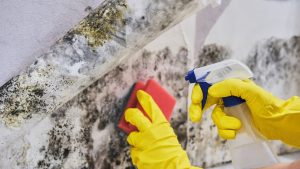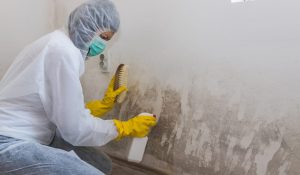
Flood-prone areas are increasingly vulnerable to the ravages of nature, with climate change exacerbating the frequency and intensity of flooding events. The aftermath of such disasters leaves communities grappling with extensive damage to property, infrastructure, and the environment. Rapid flood damage restoration has thus emerged as a critical component of emergency response in these regions. This article explores the necessity for swift action in the wake of floods and the methodologies employed in water damage restoration.
Understanding the Impact of Floods
The Devastation Caused by Flooding
Floods are one of the most destructive natural disasters, resulting in both immediate and long-term repercussions. The deluge of water can cause structural damage to buildings, erode land, and wash away roads and bridges. Furthermore, floods often lead to the contamination of water supplies, posing severe health risks to affected populations. The economic impact is also profound, with the cost of recovery stretching into billions of dollars annually.
Climate Change and Increased Flood Risks
The link between climate change and flooding is undeniable. Rising global temperatures contribute to more intense and frequent rainfall, leading to flash floods and river overflows. Sea-level rise also exacerbates coastal flooding, threatening communities living in low-lying areas. As these risks continue to grow, the need for efficient and rapid flood damage becomes even more pressing.
The Importance of Emergency Flood Damage Restoration
Mitigating Long-Term Damage
Emergency flood damage restoration is essential for mitigating the long-term effects of flooding. Prompt action helps to reduce the extent of water damage to properties, minimising repair costs and preventing secondary issues such as mould growth and structural weakening. The quicker the response, the less likely that permanent damage will occur, thereby preserving the integrity of buildings and infrastructure.
Protecting Public Health
Floodwaters are often contaminated with hazardous substances, including sewage, chemicals, and debris. Rapid water damage restoration is crucial for preventing the spread of waterborne diseases and protecting public health. Removing standing water and sanitising affected areas helps to eliminate harmful pathogens and restore safe living conditions.
Rapid Flood Damage Restoration Techniques
Water Extraction and Drying
The first step in flood damage is the removal of standing water. High-powered pumps and vacuums are used to extract water from affected areas, followed by the deployment of industrial dehumidifiers and air movers to dry out the environment. This process is vital for preventing mould growth and further structural damage.
Cleaning and Sanitisation
Once the area is dry, thorough cleaning and sanitization are necessary to remove contaminants and restore hygiene. This involves the use of specialised cleaning agents and equipment to ensure that all surfaces are disinfected. Professionals also address any items that have been damaged by water, using techniques such as freeze-drying for documents and textiles.
Structural Repairs and Restoration
After the initial cleanup, restoration professionals assess the damage to structures and commence repairs. This may involve replacing drywall, flooring, and insulation, as well as repairing electrical and plumbing systems. The goal is to return the property to its pre-flood condition as efficiently as possible.
Leveraging Technology in Flood Damage Restoration
Advanced Detection and Monitoring
Modern technology plays a significant role in enhancing the efficiency of flood damage restoration. Advanced moisture detection tools, such as thermal imaging cameras and hygrometers, allow professionals to identify hidden pockets of moisture that could lead to further damage. Continuous monitoring during the restoration process ensures that all areas are adequately dried and treated.
Innovative Restoration Equipment
The use of cutting-edge equipment has revolutionised the field of water damage restoration. High-capacity water extractors, low-grain refrigerant dehumidifiers, and hydroxyl generators are just a few examples of the technology employed to accelerate the restoration process and improve outcomes for affected properties.
The Role of Professional Restoration Services
Expertise and Experience
Professional restoration services bring a wealth of expertise and experience to the table. Trained technicians are equipped to handle the complexities of flood damage, ensuring that the process is conducted safely and efficiently. Their knowledge of the latest techniques and technologies allows them to deliver superior results in challenging situations.
Comprehensive Services
Reputable restoration companies offer a comprehensive range of services to address all aspects of emergency flood damage restoration. From initial assessment and water extraction to structural repairs and post-restoration cleaning, these services are designed to meet the unique needs of each client and facilitate a seamless recovery.
Conclusion: The Imperative of Rapid Response
In flood-prone areas, the necessity for rapid flood damage restoration cannot be overstated. Prompt action is crucial for minimising damage, safeguarding public health, and restoring affected communities to their former state. As climate change continues to increase the risk of flooding, investing in advanced restoration techniques and professional services will be essential for building resilience and protecting vulnerable populations.



